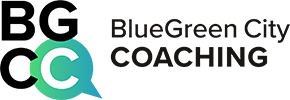Module blue-green infrastructure planning
Cities are facing major challenges due to climate change: extreme weather events such as heavy rainfall and droughts are increasing and affect not only residents but also urban infrastructure and water resources. Since cities are among the largest consumers of global resources, they play a central role when it comes to developing sustainable strategies and adaptation measures.
Blue-green infrastructures (BGI) are becoming increasingly important in this context, as they offer nature-based solutions for urban challenges such as flooding, heat stress, and resource conservation. However, cities often face difficulties in identifying, comparing, and integrating suitable measures into their planning — especially in light of complex framework conditions, limited resources, and sometimes conflicting objectives. This often leads to strategies that inadequately address actual urban challenges.
The Coaching Toolbox addresses exactly this issue. It supports cities and municipalities in developing methodologically sound decision-making foundations (Figure 1). This includes the development of technically and spatially plausible scenarios, the simulation of their impacts, and the spatial modeling of effects. In addition, an economic assessment is carried out that captures both immediate costs and medium- to long-term benefits. In this way, different courses of action can be made transparently comparable, providing a solid basis for planning and investment decisions.
Special emphasis is placed on co-design processes, in which administration, specialized planning departments, policymakers, and civil society work together on solution strategies. This approach not only highlights the potential of BGI — for example, for stormwater management, urban cooling, or the promotion of biodiversity — but also ensures their targeted integration into local planning. In this way, knowledge-based, participatory strategies are developed that go beyond purely technical measures.
The following methods are used for the coaching toolbox, among others:
- MUST-B – Tool for Block-Level Stormwater Management: Estimates retention and infiltration potential of decentralized blue-green infrastructures and supports cost-based planning at urban block scale. (DOI:10.3390/w13030378)
- B-GRIIN – Tool for BGI Irrigation Planning: Simulates coupled blue-green infrastructures to achieve zero-runoff urban blocks and optimize irrigation water use. (DOI:10.2166/bgs.2024.101)
- NBS Scenario Modelling – Tool for Spatio-Economic Planning: Supports cities in identifying, locating, and dimensioning decentralised NBS for resilient stormwater management. (DOI:10.1016/j.wroa.2024.100284)
- Pysewer – Tool for Sewer Network Generation: Automates the creation of gravity-based sewer networks using spatial and demographic data. (DOI:10.21105/joss.06430)

